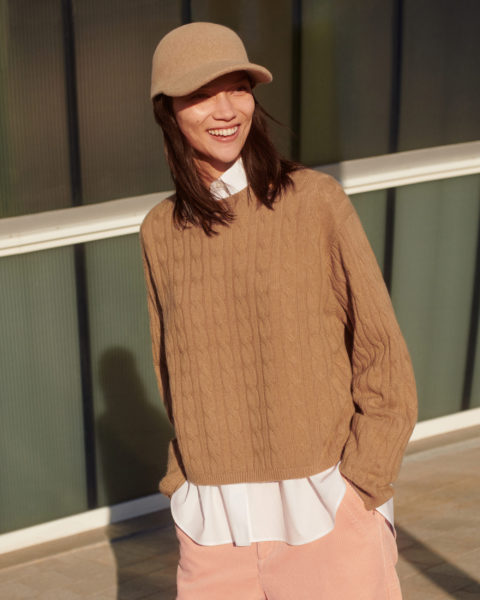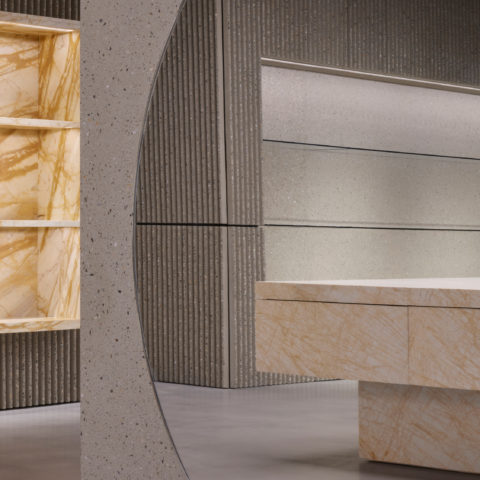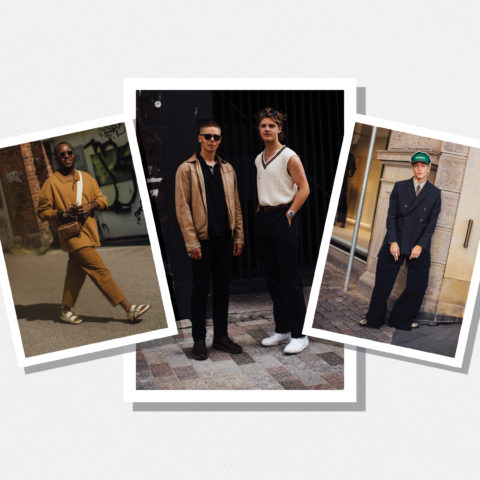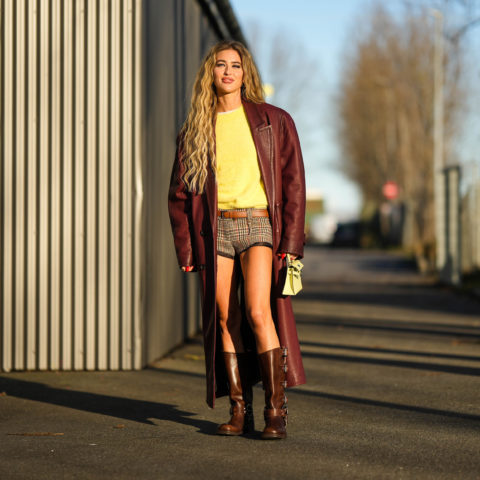Clare Waight Keller and Uniqlo Tackle the Art of Getting Dressed
The legendary luxury designer is back with a line of everyday affordable essentials. Here, she reveals why.
These days, picking out clothes can be a bit of a conundrum. Whether you’re working from home, commuting to the office, or oscillating between both, piecing together the “right” outfit to face the day looks different in a post-COVID era. Famed designer Clare Waight Keller has been pondering that a lot lately.
RELATED: Red Accessories Are the Key to Fall Dressing
“I think the idea of having office wear or home wear or weekend wear is gone. It’s all blended into one,” she says at a press event on a sunny afternoon in Paris. The British artistic director — whose resume includes helming Chloé and Givenchy as well as designing Meghan Markle’s wedding dress — is here to discuss her new womenswear label with Uniqlo, entitled Uniqlo: C. (“C” for chic, casual, commuting, and yes, Clare.)
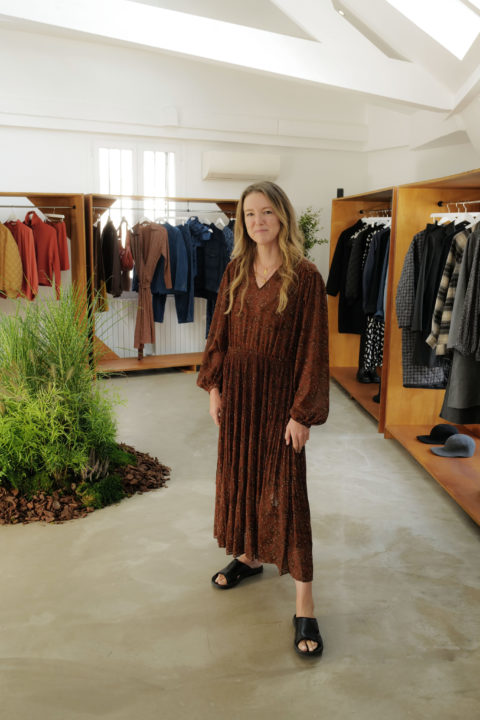
The colourful 30-piece capsule collection is meant to take you from the couch to the city, with key pieces like wrinkle-proof pleated skirts, all-season oversized trenches, and pullover sweaters that can be layered with ease. Waight Keller looks sartorially serene, sporting the line’s billowing Printed Chiffon Pleated Dress (which retails at a palatable $79.90). “The dress I’m wearing has strings so that you can bring it in and out. The skirts have elastic bands. Everything has a sense of movement and softness to it,” she explains. These intentional subtleties are a styling saving grace, and they’ve become her calling card.

When the aforementioned Duchess of Sussex emerged in a design by Waight Keller for her 2018 wedding, she was not in a traditional ruffle-adorned royal frock but a minimalist gown with sobering clean lines. Waight Keller established a similarly refined legacy at Chloé from 2011 to 2017, where she championed romantic fluidity with boyish tailoring. As the first female creative director at Givenchy until 2020, she redirected the label’s gothic sexiness into a realm of feminine elegance. Now, this luxury philosophy has gone global. “Femininity is something that I’ve always had in my work… and I felt that that was something that I could bring to Uniqlo that speaks to my world and my vision,” she says.
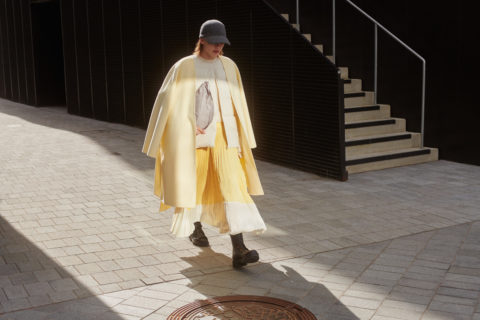
With other collaborations like Marni, JW Anderson and Jil Sander under its belt, the Japanese retailer has been secretly working with Clare Waight Keller for the past two years on this release. Rooted in the ever-evolving idea of the “modern woman,” the label exudes a mix-and-match versatility that, in today’s getting-dressed landscape, is more valuable than ever.
Ahead of its release on September 15, FASHION spoke with Clare Waight Keller about the inspirations behind Uniqlo C, the power of calmness, and what a “modern woman” looks like in 2023.
A focus of this collection is curating an “effortless” wardrobe. What do you see as some of the challenges women face when getting dressed, and how do you address them with Uniqlo C?
[There are] lots of challenges in getting dressed today. When you imagine how life has changed now that everyone is working via their phones, from home or going to the office, we’re all operating in so many different dimensions… You need clothes that look chic but are comfortable enough to wear at home, to commute to the office, or even to travel. I’m constantly travelling now, so I need clothes which can be packed easily. All of these aspects of multifunctionality have been a part of creating this capsule.
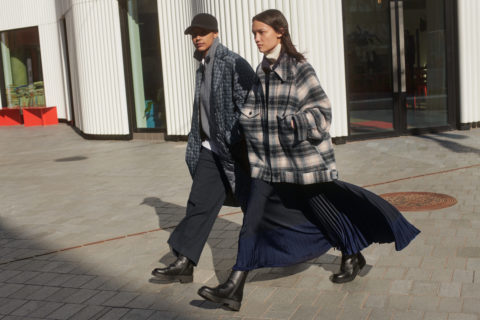
How does this collection borrow from your previous roles at the helm of luxury brands?
A lot of the details that are in the collection have been signatures in my previous roles. At Chloé, I used a lot of fluidity and pleats. So I worked quite carefully over a long period of time with them because pleats are not a typical fabric texture that [Uniqlo works] with. Finding the right fabric that could do the pleating, do the micro-pleating, and have drawstrings… it took several tries to get it right. There were all these details that I had prior experience and knowledge of from working in France that I was able to bring to them in Tokyo.

The fluidity of the collection evokes a sense of serenity. You’ve been described as calm by your industry peers. How does that trait inform your design process?
It’s true. I mean, I think that’s what everyone’s looking for in their lives, actually. You want to be able to open your wardrobe doors and think, “OK, I could put that with that. Or, today, I want to add that with that.” The most challenging thing for women is that there’s so much choice out there that sometimes it’s quite difficult to get dressed in the morning. There’s also this sense of being very self-conscious. I wanted the idea of effortlessness… For me, it’s a lot about feeling and emotion when you get dressed. Sometimes you feel good, and sometimes you don’t, because those are the ups and downs of being a woman who’s working and who has many things going on in her life. So if clothes can help, then that’s an amazing asset.

While there’s a focus on femininity, there’s also a sense of androgyny via boyish-cut trousers and boyfriend pullovers. Why was that important for you to have?
That kind of crossover mix has always been part of my DNA and aesthetic. In my past working in menswear, I just loved having that slight rigour of the men’s tailoring to contrast with femininity. I also think it looks really modern on a woman to be able to have that kind of boyish blazer over a skirt. It just feels fresh, and I think it gives a lot of different aspects to your wardrobe. You can dress it in different ways but still feel feminine.
It’s refreshing to see menswear elements as pillars of a collection that emphasizes the “modern woman.” It seems like this image is very much tied to gender fluidity.
It is. Ever since I put the announcement post up on Instagram, I’ve had a lot of men sending messages saying, “When can I wear men’s?” or, “Can I wear the collection?” The interesting part is that a lot of what I’ve designed has been boxy or oversized. So by buying a few sizes up, anyone could wear it, which is really nice.
This interview has been edited and condensed for clarity.
This article contains affiliate links, so we may earn a small commission when you make a purchase through links on our site at no additional cost to you.

